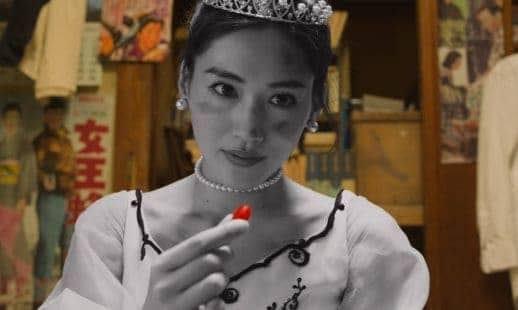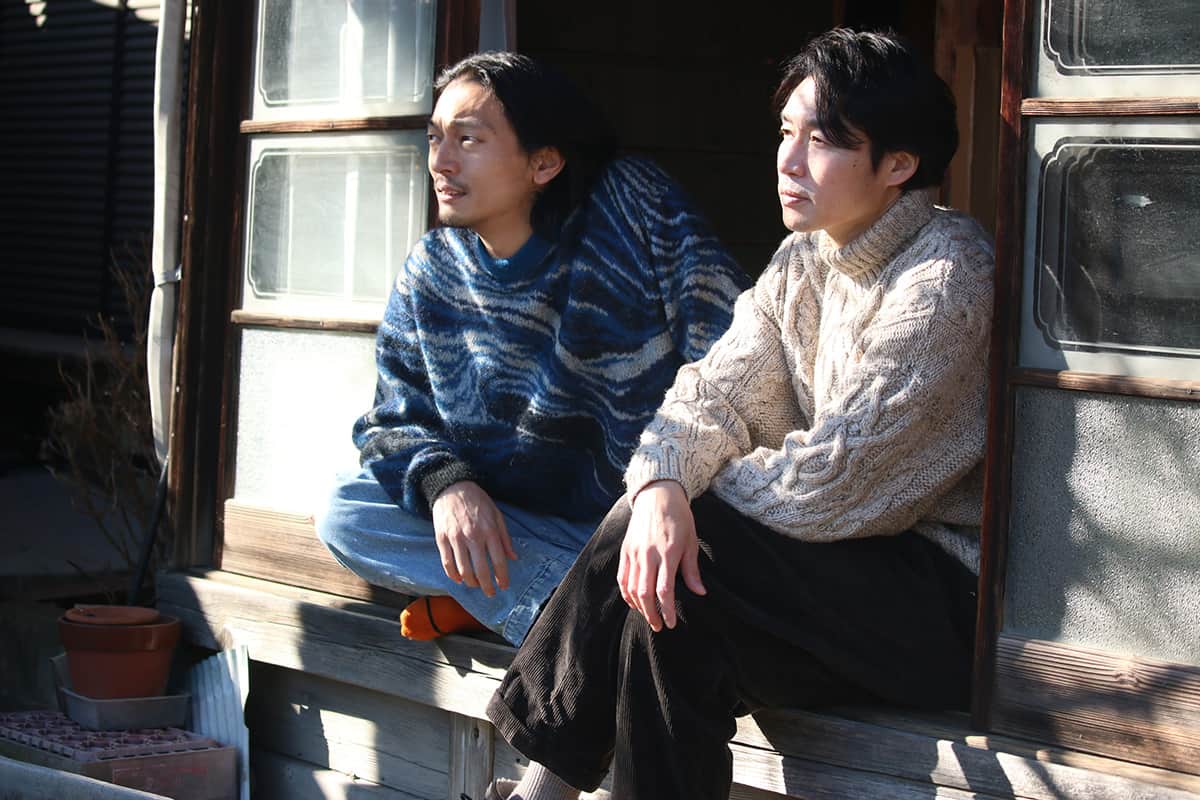Hideki Takeuchi seems to be making a career out of people jumping into the real world from another “dimension”, and after the two “Thermae Romae” and the Roman in contemporary Japan, he directs a story of a movie character coming to life in Japan in the 60's. Let us take things from the beginning, though.
Tonight, at the Movies is part of the 2019 Japan Foundation Touring Film Programme

Kenji is a struggling assistant director during the 60's, when the industry in Japan experienced a significant decline due to popularity of TV, who tries to make it happen but is, in essence, just an errand boy. Furthermore, he is a workaholic, whose long-hours occasionally lead him into making blunders, just like when he spills paint all over the costume of the company's star, Ryonosuke Shundo. In his quite hard life, the only source of true enjoyment comes from a theatre where he spends his free time, where the proprietor has agreed to let him watch black-and-white films of the past. His favorite is “The Tomboy Princess” particularly because he considers the protagonist, Princess Miyuki, the most beautiful woman in the world.
One day, a power outage results in the woman of his dreams materializing in the real world in all her monochrome glory, although her character has all the traits and faults of a real princess. Initially, she causes nothing but trouble for Kenji but as he introduces her to his Technicolor world, the two warm up to each other. Their romance though, has to face a terrible rule, that might as well, make their relationship not viable.

Hideki Takeuchi directs a comedy/drama that revolves around three axes. The first one is love, as he presents an unlikely love story in the most delightful manner, through a bossy woman who calls Kenji constantly, “servant” and a man who is willing to go to extremes to satisfy her every wish. Through this arc, Takeuchi presents a relationship “against all odds”, which carries the film up to the surprising and quite heart breaking finale.
The second axe revolves around the concept of “a movie about movies”, with Takeuchi presenting the circumstances of the Japanese movie industry of the time with accuracy but also much humor, focusing on the caprices of the movie stars personified in tShundo's character, and the struggle of the employees, through Kenji. Regarding Shundo, Kazuki Kitamura gives a wonderful performance, filled with pretentiousness and theatricality, in one of the best assets of the film.
The third one and the one that envelopes the whole production, is the sense of nostalgia about an era long gone, which seems to derive from the love for cinema, a sentiment that also permeates the film. This sense is communicated through both the accuracy in behaviors, settings and costumes of the time, but also through Norihito Sumitomo's wonderful music, who “dresses” almost every scene with the most fitting attire of notes, in a style much similar to the one usually implemented in Hollywood. Hideo Yamamoto's cinematography is also excellent, creating images of beauty in a number of different settings, again, though, retaining the accuracy that permeates the film. The narrative actually unfolds in two timelines, past and present, and Hiroshi Matsuo's editing succeeds in combining them in the best fashion, all the while retaining a relatively fast pace that suits the film's overall aesthetics.

The protagonist duo is another of the movie's best assets. Kentaro Sakaguchi is excellent as a man struggling both professionally and romantically, but never actually quitting either, always ready to deal with any issues with a smile and an inherent kindness. Haruka Ayase is also great in the role of the spoiled princess who changes radically due to her interaction with a man who seems willing to do anything for her. Ayase has a certain “aristocratic” beauty that fits the role of the princess to perfection, and Takeuchi and Yamamoto stressed the fact as possible in the film's visuals, with wonderful results. The two actors also highlight their great chemistry, with the scenes where Miyuki acts like a princess, even becoming violent to the people around her, and him trying to ask for forgiveness for her acts (not always successfully) being among the most entertaining in the film.
“Tonight, at the Movies” is, in essence, a fairy tale, a very entertaining film that succeeds in all of its three capacities (love story, a movie about movies, nostalgia), thus resulting in a great spectacle that can appeal to anybody.















